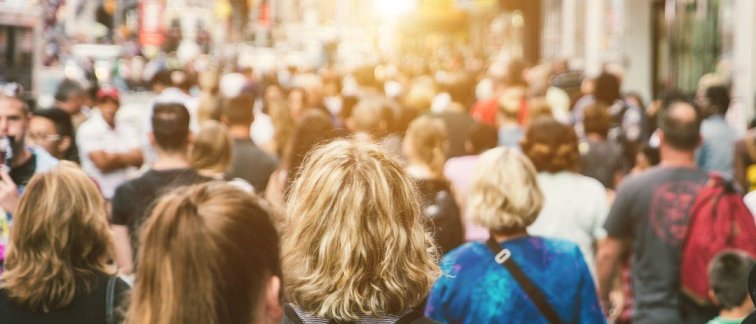Currently, about half of the world's population lives in cities or urbanized areas. And that number will only increase. In 25 years, about seven in 10 people will live there, making the city the natural habitat for humans. Does that then naturally lead to more mental health problems? “That question is not easy to answer,” Bockting says. “The big question is whether the city attracts people from outside with mental health problems, or whether the city itself is the cause of greater susceptibility to mental problems and their perpetuation.”
One factor closely related to mental health problems is so-called socioeconomic status; roughly one's level of education, income and social standing. In cities such as Amsterdam, there are larger groups with relatively low socioeconomic status than in smaller communities such as Soest, Mijdrecht or Edam, contributing to a higher prevalence of mental health complaints in Amsterdam.
“The urban residents also encounters more stressful situations,” Bockting said. “The city person biking to work in the morning rush hour has to pay more attention than someone in the countryside. Bike jams, fast e-bikes, cars, scooters, walkers and ringing streetcars create more stimuli than whistling birds.” Stress by itself is usually not a direct cause of depression. But it can affect other factors and thus lead to mental health problems, which in turn can result in depression. Consider a certain level of stress combined with unpleasant, life-defining events, such as the death of a loved one, the end of a love relationship or the loss of a fun job. Separately, these factors may contribute less to the onset of depression, but as they interact, they can lead to depression.
The interdisciplinary Centre for Urban Health is investigating how different factors interact. “This should lead to new entry points for interventions and policy,” Bockting said. “With this, we can promote mental health and contribute to a better approach for people with anxiety, depressive disorders and addiction.” One can think of approaches at different levels, such as small interventions in the environment, but also strengthening social connection in the neighborhood. After all, a factor that is most likely related to psychological distress is the social cohesion a person experiences. There is a big difference in being alone or being part of a group or community that can be supportive in the face of adversity. That interconnection tends to be higher in villages than in cities, is the assumption.
“Suppose city people bike to work every morning via a green route, does this decrease stress levels?” says Bockting. “Does encouraging fun activities in the neighborhood make people more connected? And does that also decrease the risk of depression, anxiety disorder or addiction? The Center for Urban Mental Health is focusing on this type of research over the next five years.”
“People want to mean something to other people, we all have that in common,” says Bockting. “That also explains the success of digital social networks. But digital closeness feels different to many people than real closeness.”
“Simple measures would increase interconnection in cities,” Bockting says. Consider an urban neighborhood adopting a row of fruit trees on its street. Neighbors grow them together, pick the fruit and make jam out of it. “So with a very small intervention like the fruit trees, you would create a buffer against loneliness; you are seen, people notice you are there. That social contact can make the difference between having mental health problems or not.”

